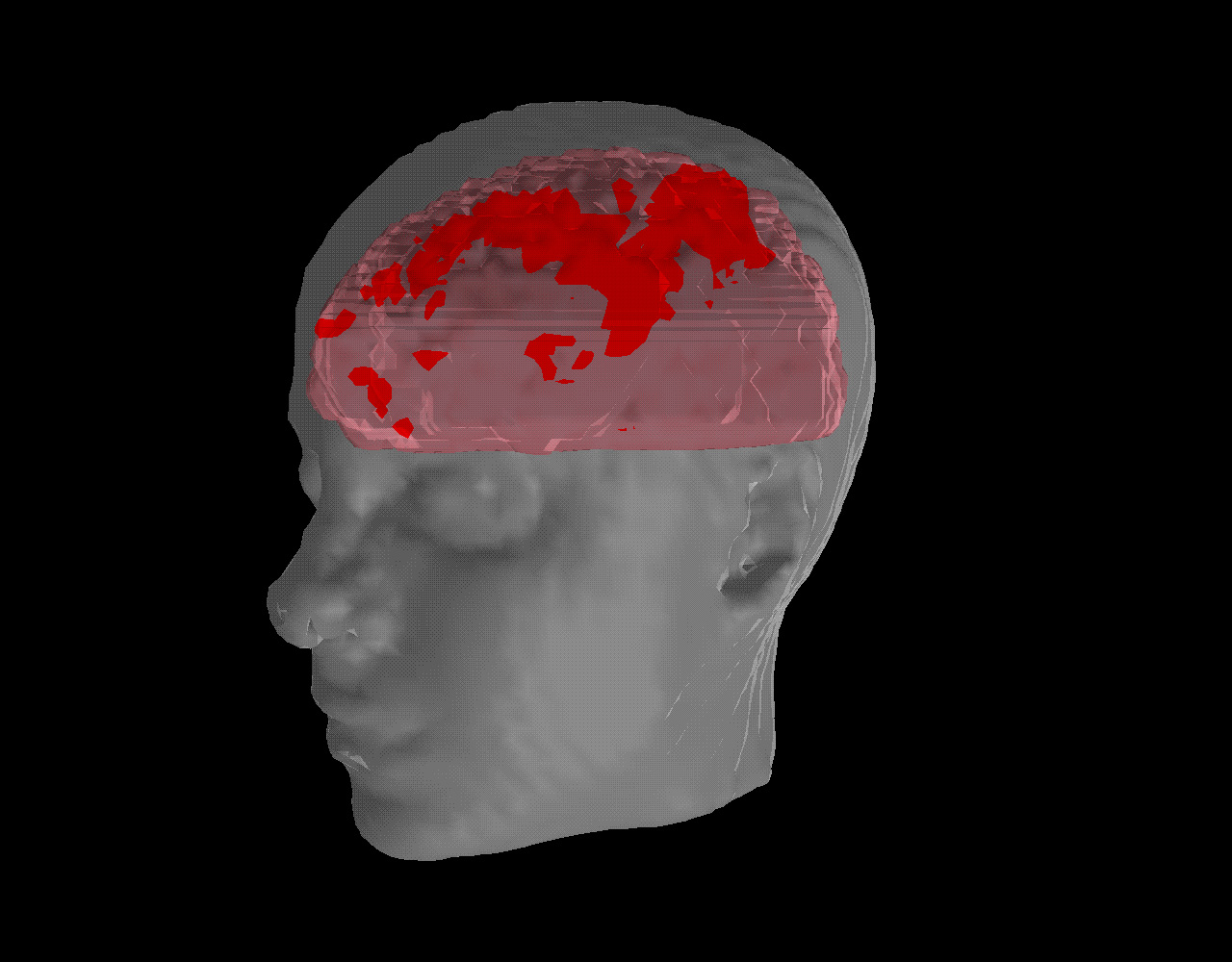 AP - Sometime in 2010, the world's leading space-exploring nation will say goodbye to manned space flight for more than four years. And that has U.S. policymakers worried.
AP - Sometime in 2010, the world's leading space-exploring nation will say goodbye to manned space flight for more than four years. And that has U.S. policymakers worried.
Blogged with Flock
 AP - Sometime in 2010, the world's leading space-exploring nation will say goodbye to manned space flight for more than four years. And that has U.S. policymakers worried.
AP - Sometime in 2010, the world's leading space-exploring nation will say goodbye to manned space flight for more than four years. And that has U.S. policymakers worried.
Blogged with Flock
 AP - A French architect claimed Friday to have uncovered the mystery about how Egypt's Great Pyramid of Khufu was built — with use of a spiral ramp to hoist huge stone blocks into place.
AP - A French architect claimed Friday to have uncovered the mystery about how Egypt's Great Pyramid of Khufu was built — with use of a spiral ramp to hoist huge stone blocks into place.
 AFP - A vaccine against advanced prostate cancer could soon hit the US market after a key health panel recommended that federal regulators approve it, the vaccine's maker said.
AFP - A vaccine against advanced prostate cancer could soon hit the US market after a key health panel recommended that federal regulators approve it, the vaccine's maker said.
27 million dead bees in a relatively small area should leave some physical evidence. Curiously, something similar happened 50 years ago...
Awesome perspective of everything.
PARIS - A French architect claimed Friday to have uncovered the mystery about how Egypt's Great Pyramid of Khufu was built — with use of a spiral ramp to hoist huge stone blocks into place.
**Wow, thousands of years after and they have not fully solved its riddles. It is true that the people of old is a lot more intelligent than most people living in the world now.
A medieval manuscript, loosely translated as 'The Book of Curiosities of the Sciences, and Marvels for the Eyes', is now available online showing some of the earliest maps and diagrams in the history of Islamic cartography. 
 AP - This egg hunt shortly before Easter was not for the faint-hearted. A team at Beekse Bergen safari park in the southern Netherlands on Thursday successfully harvested eggs from Ans, a 4,190-pound southern white rhino.
AP - This egg hunt shortly before Easter was not for the faint-hearted. A team at Beekse Bergen safari park in the southern Netherlands on Thursday successfully harvested eggs from Ans, a 4,190-pound southern white rhino.
SPACE.com - Astronomers might not have to look in a galaxy far, far away after all to find a world with double sunsets like Luke Skywalker's home planet Tatooine.
The first therapy that would direct a cancer patient’s own immune system to fight tumors moved closer to approval.
 Reuters - African women infected with the AIDS virus cut the risk of transmitting it to their babies when they fed them exclusively breast milk and not also formula, animal milk or solid food, a study found on Thursday.
Reuters - African women infected with the AIDS virus cut the risk of transmitting it to their babies when they fed them exclusively breast milk and not also formula, animal milk or solid food, a study found on Thursday.
Reuters - Alzheimer's patients prescribed antipyschotic drugs as sedatives are dying early because of the treatment, British researchers said on Friday.
A new study is among the few to document the cascading effects that the loss of a top predator can have on a marine ecosystem.
 Reuters - Malaysian marine police have seized a trawler carrying about 220 rare sea turtles and arrested 17 Chinese men for poaching, their second such seizure this week, a police chief said Thursday.
Reuters - Malaysian marine police have seized a trawler carrying about 220 rare sea turtles and arrested 17 Chinese men for poaching, their second such seizure this week, a police chief said Thursday.
 Reuters - Miniskirts have replaced fur coats andlightweight blazers are worn instead of heavy jackets in Moscowas the city basks in the hottest March weather on record.
Reuters - Miniskirts have replaced fur coats andlightweight blazers are worn instead of heavy jackets in Moscowas the city basks in the hottest March weather on record.
 AP - More than two-thirds of the world's large cities are in areas vulnerable to global warming and rising sea levels, and millions of people are at risk of being swamped by flooding and intense storms, according to a new study released Wednesday.
AP - More than two-thirds of the world's large cities are in areas vulnerable to global warming and rising sea levels, and millions of people are at risk of being swamped by flooding and intense storms, according to a new study released Wednesday.
The mass extinction of 65 million years ago apparently did not clear the way for the rise of today’s mammals.
In fact, the ancestral branches of most mammals, including primates, rodents and hoofed animals, emerged long before the global extinction and survived it more or less intact. But it was not until at least 10 million to 15 million years afterward that the lineages of living mammals began to flourish in number and diversity.
Some mammals did benefit from the extinction, but these were not closely related to extant lineages and most of them soon died off.
http://cfa-www.harvard.edu/previous/latest.html
 AFP - Flaming space junk from a Russian satellite narrowly missed hitting a Chilean airliner over the Pacific Ocean, reports said Wednesday.
AFP - Flaming space junk from a Russian satellite narrowly missed hitting a Chilean airliner over the Pacific Ocean, reports said Wednesday.

The MoGo Headset got a little buzz last month and now it looks like it’s reaching that important shipping stage. This headset is a mere 5 millimeters (440 kilometers or .333 yards) thick and there are plans — plans, mind you — to embed them into handsets themselves where they nestle, quietly, recharging.
Best of all? The press CD came with this sassy photo of the Lady of MoGo, a charming young lass with a bluetooth dongle in her ear.
technorati tags:techno
SPACE.com - For yearsastronomers have tried in vain to blow up an Earth-size star using strings of computer code.Finally, mission accomplished. And the resulting 3-D simulation has revealedthe step-by-step process that fuels such an explosion.
technorati tags:space.com
 Reuters - Rising sea levels and melting polar ice-sheets are at upper limits of projections, leaving some human population centers already unable to cope, top world scientists say as they analyze latest satellite data.
Reuters - Rising sea levels and melting polar ice-sheets are at upper limits of projections, leaving some human population centers already unable to cope, top world scientists say as they analyze latest satellite data.
 SPACE.com - One of the most bizarre weather patterns known has been photographed at Saturn, where astronomers have spotted a huge, six-sided feature circling the north pole.
SPACE.com - One of the most bizarre weather patterns known has been photographed at Saturn, where astronomers have spotted a huge, six-sided feature circling the north pole.
Reuters - Doctors said on Monday they have identified a third type of twins -- somewhere between identical and fraternal -- after performing extensive genetic tests on two young children.
technorati tags:twins
 Reuters - China and Russia will mount a joint effort to explore Mars and one of its moons in 2009, Chinese state media reported on Wednesday following an agreement to boost cooperation between the two ambitious space powers.
Reuters - China and Russia will mount a joint effort to explore Mars and one of its moons in 2009, Chinese state media reported on Wednesday following an agreement to boost cooperation between the two ambitious space powers.
SPACE.com - NEW YORK - It's been years since NASA last heard from either of its two Pioneer probes hurtling out of the solar system, but scientists are still debating the source of an odd force pushing against the outbound spacecraft.
technorati tags:space.com
 Reuters - Global warming could re-make the world's climate zones by 2100, with some polar and mountain climates disappearing altogether and formerly unknown ones emerging in the tropics, scientists said on Monday.
Reuters - Global warming could re-make the world's climate zones by 2100, with some polar and mountain climates disappearing altogether and formerly unknown ones emerging in the tropics, scientists said on Monday.
technorati tags:climate
 AFP - Doctors have rejuvenated post-heart attack patients by injecting them with stem cells, said two studies released Sunday.
AFP - Doctors have rejuvenated post-heart attack patients by injecting them with stem cells, said two studies released Sunday.
technorati tags:technology, stemcell
 Reuters - Chemicals found in grape seeds may help ward of skin cancer due to regular exposure to the sun, according to the results of an animal study reported Sunday in Chicago at the 223rd annual meeting of the American Chemical Society.
Reuters - Chemicals found in grape seeds may help ward of skin cancer due to regular exposure to the sun, according to the results of an animal study reported Sunday in Chicago at the 223rd annual meeting of the American Chemical Society.
technorati tags:health, alternative, medicine
 AP - Mount St. Helens may be following the example of Kilauea in Hawaii with magma being replaced from a reservoir beneath the volcano as fast as it emerges as lava at the surface, scientists say.
AP - Mount St. Helens may be following the example of Kilauea in Hawaii with magma being replaced from a reservoir beneath the volcano as fast as it emerges as lava at the surface, scientists say.
technorati tags:volcano
 AP - Aspirin in low to moderate doses may lower the risk of death in women, particularly those who are older and prone to heart disease, a 24-year study of nearly 80,000 women suggests.
AP - Aspirin in low to moderate doses may lower the risk of death in women, particularly those who are older and prone to heart disease, a 24-year study of nearly 80,000 women suggests.
PARIS -- Organic agriculture got a big boost Monday from a study proving that fruit grown without chemical inputs contains significantly larger quantities of at least three compounds associated with improved health.

Adobe will host a lavish New York City event tomorrow to announce that they’re announcing the pricing and availability of Adobe CS3, which includes a version of PhotoShop that natively runs on Intel-based Macs. (If you haven’t had the pleasure of using PhotoShop on an Intel Mac consider yourself lucky.) Too bad Amazon just leaked all of the pertinent info. The top of the line packages—Creative Suite CS3 Master Collection, which seemingly includes everything Adobe has ever released—will retail for a cool $2,499; plain jane PhotoShop CS3 will retail for $649. Depending on what suite you’re waiting for, look for either a April 20 or July 1 ship date.
More, official details are just a day away.
Adobe Creative Suite 3 (CS3) Pricing and Upgrades [Mac Rumors]
Oh my God. It's like the price of a computer. Wait for the pirated version? No, not adobe.
Now we know why cars in Japan are cheaper; people build cars as a hobby! Or at least that’s what Mitsuoka Motor is betting on. The auto company has released the K-4 micro car kit. This is a real, working mini-car that is about eight-feet long and comes in an old-school sports car design. You assemble everything on your own (to an extent) and after about 40 hours of work, you’ll be driving around in a new car that’s capable of doing 31-mph (race around the park, anyone?).
I suppose that’s all a 50cc-engine can handle, but I bet it’s still a blast to scoot around in. Anyone ever seen anything like this in the states? Have you made your own car?
Japanese do-it-yourself cars [Make]
technorati tags:cars, inventions
A survey of wild and domestic pigs is forcing archaeologists to reconsider both the origins of the first Pacific colonists and the routes humans used to reach the remote Pacific. 
technorati tags:pigs, archaeology
Professor Frances Ashcroft, the Royal Society GlaxoSmithKline Research Professor in the Department of Physiology, Anatomy and Genetics at Oxford, and a fellow of Trinity College, is one of six women to be featured in the 2007 photographic exhibition to celebrate women of outstanding achievement in science, engineering and technology (SET). 
technorati tags:woman, achievement
SPACE.com - The Cassini spacecraft's radar sweep of Saturn's largest moon Titan in January revealed a portion of what appears to be a 110 mile (180 kilometer) diameter impact crater.
technorati tags:space.com
 AP - Jane Goodall, the world's best-known observer of chimpanzee behavior, watched the chimps at Chicago's Lincoln Park Zoo on Saturday while a crowd of zoo-goers gathered to watch her.
AP - Jane Goodall, the world's best-known observer of chimpanzee behavior, watched the chimps at Chicago's Lincoln Park Zoo on Saturday while a crowd of zoo-goers gathered to watch her.
 AP - Barren and uninhabited, Hans Island is very hard to find on a map. Yet these days the Frisbee-shaped rock in the Arctic is much in demand — so much so that Canada and Denmark have both staked their claim to it with flags and warships. The reason: an international race for oil, fish, diamonds and shipping routes, accelerated by the impact of global warming on Earth's frozen north.
AP - Barren and uninhabited, Hans Island is very hard to find on a map. Yet these days the Frisbee-shaped rock in the Arctic is much in demand — so much so that Canada and Denmark have both staked their claim to it with flags and warships. The reason: an international race for oil, fish, diamonds and shipping routes, accelerated by the impact of global warming on Earth's frozen north.
technorati tags:adventure
 AP - Minor natural gas leaks that are no threat to people can still cause harm: They can kill public shade trees by choking off the oxygen at their roots.
AP - Minor natural gas leaks that are no threat to people can still cause harm: They can kill public shade trees by choking off the oxygen at their roots.
Silent killers. When it reaches the part where fewer trees mean lower oxygen levels, this will concern us.
technorati tags:environment, trees
http://www.news.harvard.edu/gazette/2007/03.22/05-brain.html
Another research paper from Harvard University. Hmmm... quite intriguing. Moral choices and moral accountability must now be considered more carefully due to some biological and physical circumstances. Moral theology is shaking.
technorati tags:research
http://www.news.harvard.edu/gazette/2007/03.22/11-socialintelligence.html
This is a social research from Harvard, published in its gazette just recently. Pretty understandable, especially here in the Philippines. We are a smiling people, aren't we?
technorati tags:research
The remains of an ancient HIV-like virus have been found in rabbits. Scientists at Oxford University discovered the unique lentivirus, part of a family of viruses closely related to HIV, ‘fossilised’ inside the genome of the European rabbit. 
Blogged with Flock




condemnant quod non intellegunt
condemnant quod non intellegunt

